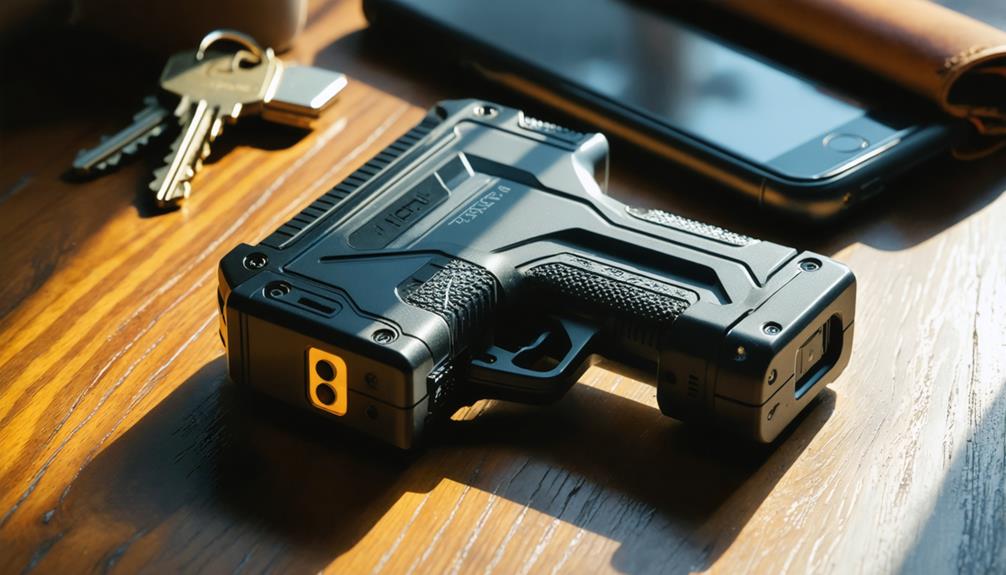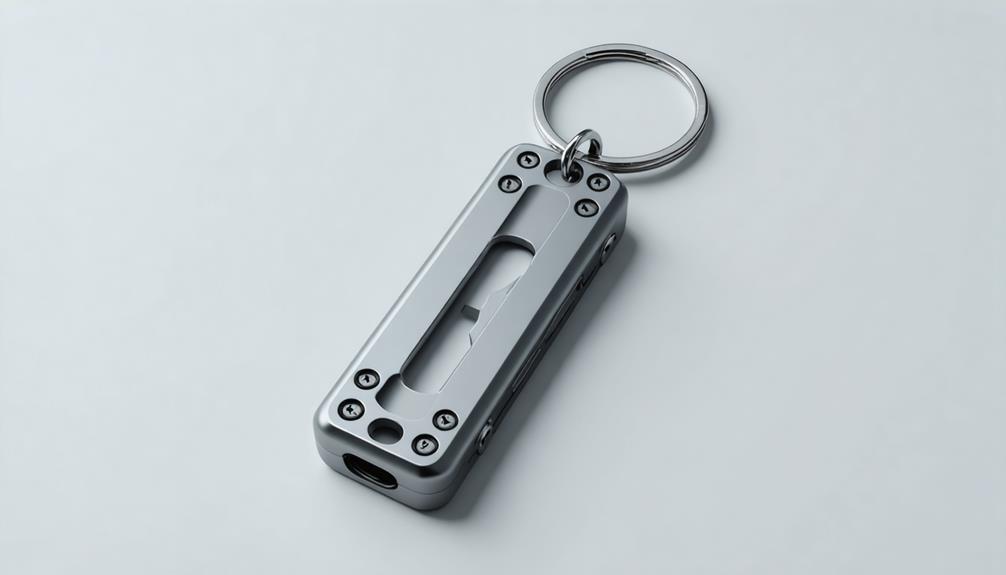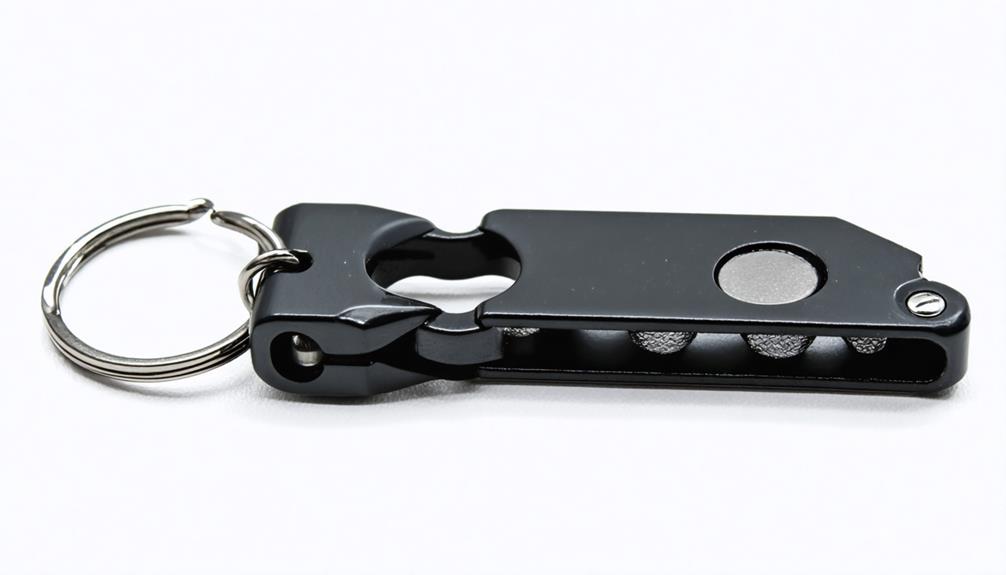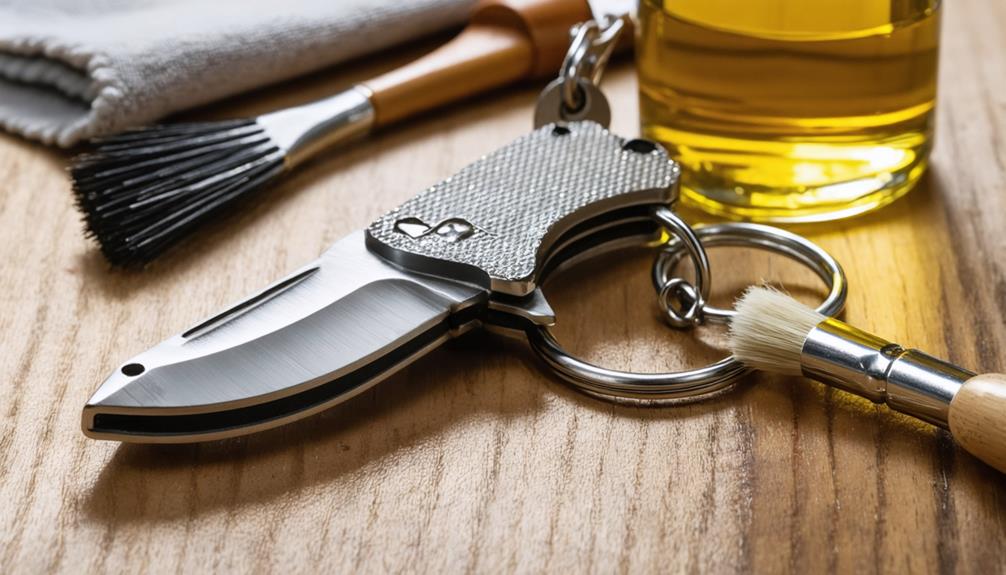
Brainstorm Security Shop

For Orders Over $199

On Any Of Our Products

Details On Refund Page

In an ever-evolving landscape of personal security, the self-defense keychain emerges as a discreet yet powerful ally. With its variety of forms—ranging from the unassuming kubotan to the assertive pepper spray—it offers a spectrum of protective options tailored to personal needs. Yet, beyond its practicality lies a myriad of considerations: choosing the right type, understanding legal boundaries, and ensuring its readiness through proper care. As we navigate the complexities of enhancing personal safety, one question remains: How do we best integrate such a tool into our daily lives without compromising legality or convenience?
Self-defense keychains exist in a variety of forms, each designed to cater to specific needs and preferences, providing both utility and peace of mind. These compact devices have become increasingly popular as practical tools for enhancing personal safety in everyday situations. The diverse array of tactical designs available ensures that individuals can select a keychain that aligns with their specific requirements and lifestyle.
One common type is the kubotan, a small rod made of metal or hard plastic that serves as a pressure point weapon. Its tactical design allows for easy handling and effective self-defense maneuvers.
Another popular variant is the pepper spray keychain, which combines a small canister of pepper spray with a convenient attachment, enabling quick access in emergencies. Alarm keychains, meanwhile, emit a loud sound to deter potential attackers and attract attention, thus enhancing personal safety.
Additionally, some keychains feature multifunctional tools, such as seatbelt cutters and window breakers, tailored for emergency situations. These types seamlessly blend practicality with protection, making them appealing to those who value preparedness.
Ultimately, the wide range of self-defense keychains allows individuals to choose a model that best meets their personal safety needs while fitting into their daily routines.
With an array of self-defense keychains available, selecting the right one requires careful consideration of individual needs and lifestyle factors. The choice should be guided by how seamlessly the keychain integrates with one’s daily routine and enhances personal safety without causing inconvenience.
For those who prioritize discretion and minimalism, a compact design that fits easily into pockets or small bags might be ideal. Conversely, individuals who prefer a more robust deterrent could opt for a keychain with additional features, provided it remains practical for everyday carry.
Consideration of the environments one frequently navigates is also crucial. Urban dwellers might favor a keychain that offers a quick response in crowded or confined spaces. In contrast, those in rural settings may require a more versatile tool suitable for various scenarios.
Furthermore, the ease of accessibility and operation is paramount; a self-defense keychain should not only be within reach but also intuitive to use under duress.
Ultimately, the right keychain is a balance between practicality and effectiveness, tailored to individual preferences and daily habits. Ensuring that your chosen keychain meets these criteria will enhance your confidence and preparedness in safeguarding personal safety.

When evaluating self-defense keychains, understanding the key features is essential to making an informed choice. These features ensure that the keychain not only serves its purpose but also seamlessly integrates into everyday life.
One of the primary considerations is design aesthetics, which affects both functionality and user comfort. A self-defense keychain should be discreet yet effective, striking a balance between being visually appealing and providing a sense of security. Sleek, modern designs often incorporate ergonomic elements, ensuring the keychain is comfortable to hold and easy to use under pressure.
Portability factors also play a crucial role in the selection process. A self-defense keychain must be lightweight and compact enough to fit comfortably in a pocket or attach easily to keys or bags without causing inconvenience. Its portability determines how likely a person is to carry it consistently, thus impacting its accessibility in critical situations.
Additionally, materials used in construction should be durable yet light, ensuring longevity without compromising ease of transport. By focusing on these key features—design aesthetics and portability—individuals can select a self-defense keychain that is not only practical but also aligns with their personal style and daily needs.
While selecting a self-defense keychain that meets personal preferences in design and portability is important, understanding the legal considerations surrounding its use is equally vital. Different jurisdictions impose varying legal restrictions on the possession and use of self-defense tools. It is crucial for individuals to research local laws to ensure compliance and avoid potential legal repercussions. Self-defense keychains, depending on their design, may be classified under specific weapon categories, leading to restrictions in certain areas or situations.
Moreover, liability issues must be considered. The use of a self-defense keychain in a confrontational scenario can result in legal ramifications, including civil or criminal liability. This highlights the importance of using such tools solely for self-defense purposes and being aware of the legal boundaries.
Here is a summary of considerations:
| Aspect | Details |
|---|---|
| Legal Restrictions | Vary by jurisdiction; check local laws |
| Classification | May be categorized as a weapon, affecting legality |
| Liability Issues | Potential for civil or criminal liability if misused |
| Defensive Use Only | Importance of using the tool strictly for self-defense purposes |
Being informed about these aspects not only ensures lawful ownership but also responsible usage of self-defense keychains.

Maintaining a self-defense keychain is essential to ensure its reliability and effectiveness when needed. Proper care involves routine cleaning and appropriate storage to preserve its condition and functionality. Regular inspection and maintenance can prevent potential malfunctions or wear and tear, ultimately ensuring the keychain is ready for use in critical situations.
To begin with, cleaning techniques should be employed to remove any dirt or residue that may accumulate over time. Use a soft cloth with mild soap and water to gently clean the surface. Avoid using abrasive materials or harsh chemicals, as these can damage the keychain’s components.
For metal parts, consider using a specialized cleaner to prevent rust or corrosion. Ensuring that the keychain is thoroughly dried after cleaning is crucial to maintain its integrity.
In terms of storage tips, it is advisable to keep the keychain in a dry, cool place when not in use. Avoid exposing it to extreme temperatures or moisture, which could compromise its durability.
Additionally, storing the keychain separately from other sharp objects can prevent accidental damage. By adhering to these maintenance practices, the longevity and effectiveness of your self-defense keychain can be significantly enhanced.
In real-life scenarios, personal safety devices’ effectiveness varies. User testimonials often highlight their role in enhancing awareness and providing a sense of security. However, their actual impact largely depends on user proficiency and situational dynamics.
Age appropriateness and legal considerations are crucial when determining suitable personal safety tools. Self-defense keychains may not be appropriate for all ages due to varying legal restrictions and the potential for misuse by younger individuals.
The best techniques involve leveraging keychain materials for personal safety, focusing on targeting vulnerable areas. Employing a firm grip and swift, precise motions can enhance effectiveness, ensuring a practical means of protection in threatening situations.
To discreetly carry a self-defense tool, consider design options that blend seamlessly with everyday items. Ensure compliance with legal considerations in your jurisdiction to avoid potential legal issues. Select designs that prioritize both functionality and subtlety.
Effective use of personal safety tools may benefit from prior training, enhancing user safety. Accessing training resources can improve proficiency, ensuring individuals utilize such tools effectively and confidently in critical situations, thereby maximizing their protective potential.
Self-defense keychains offer a versatile and accessible means of personal protection through various types, such as kubotans, pepper spray, and alarm keychains. Selecting an appropriate keychain requires careful consideration of individual requirements, portability, and legal regulations to ensure ethical and effective use. Key features such as reliability and ease of use should also be evaluated. Regular maintenance and care are crucial for ensuring functionality in emergencies, making self-defense keychains a valuable component of comprehensive personal security strategies.
Brainstorm Security Shop
1867 Caravan Trail
Ste 105
Jacksonville, FL 32216
Call us toll free: (800) 859-5566